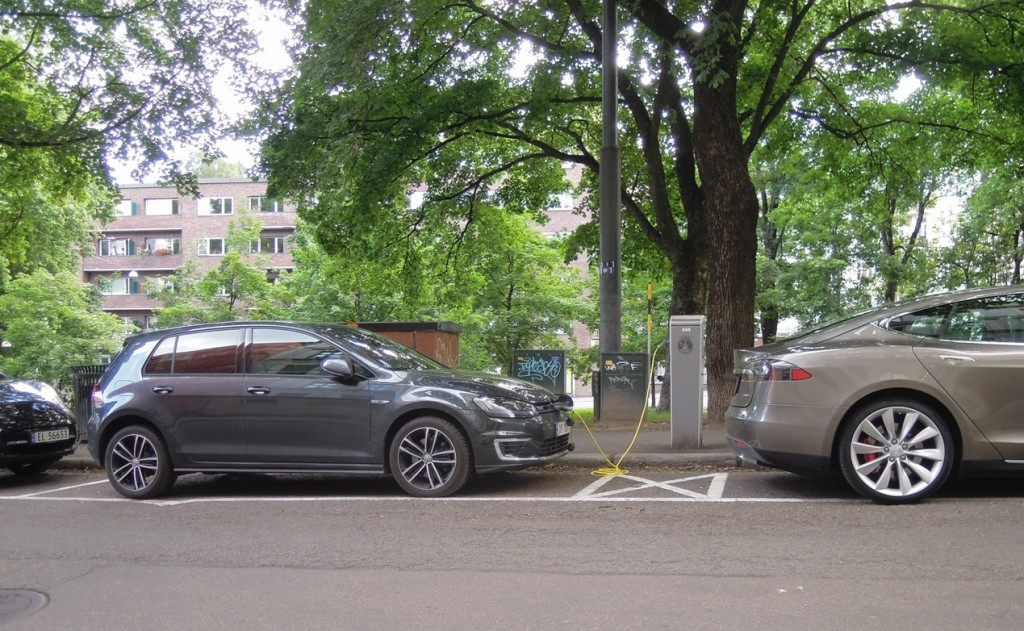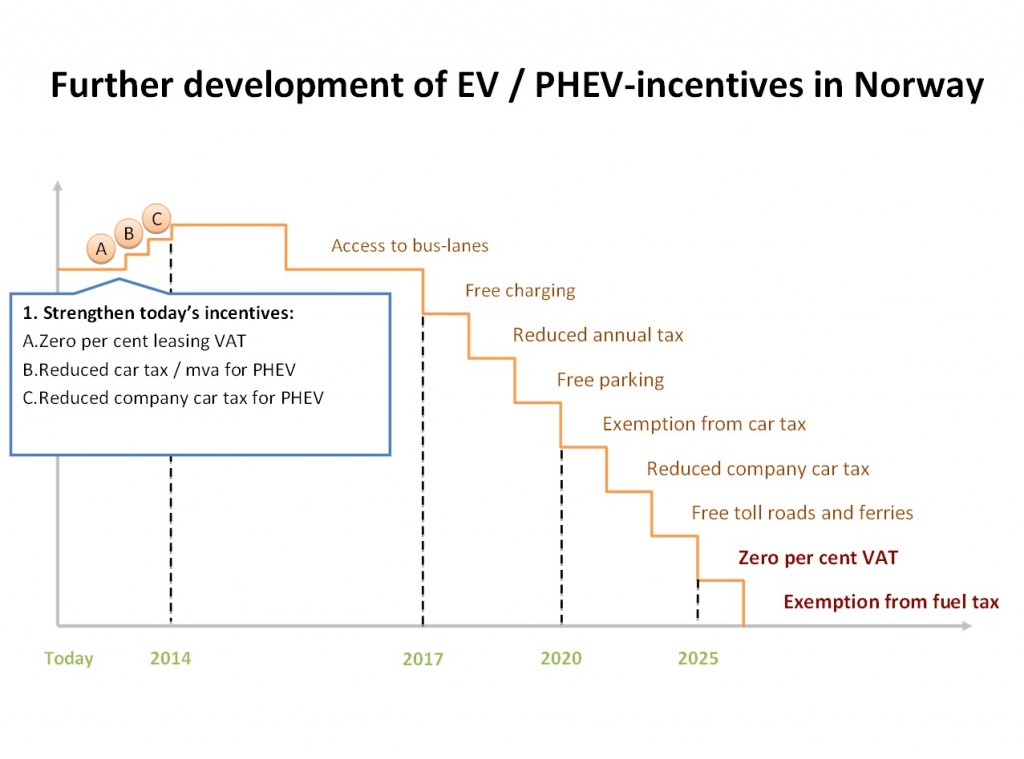
Oslo street scene: Nissan Leaf, Volkswagen e-Golf, Tesla Model S, July 2015
With yesterday's release of final EPA rules for reducing carbon emissions from power plants, the stage is set for a major battle over how--and even whether--any carbon emissions in the U.S. may be limited.
Meanwhile, there's Norway.
As Ola Elvestuen, a member of Parliament there as well as Chair of the Standing Committee on Energy and the Environment, told the EV Roadmap 8 conference in Portland last week, the country committed to reducing its carbon emissions and is carrying out a variety of policies to do just that.
DON'T MISS: EPA Issues Final Clean Power Plan Rules; Now The Fight Begins
Elvenstuen's keynote address was quietly inspirational, methodically laying out the data and the steps required to cut carbon emissions that Norway has embarked on.
His presentation, "EV Policies in Norway: Market Transformation to Renewable Energy," underscored the critical role of electric cars in cutting carbon emission from transportation.

2016 Bentley Continental GT Speed, First Drive, Oslo, Norway
Norway may be unique in its ability to take advantage of electric cars; the country generates 97 percent of its electricity from renewable sources already, largely hydroelectric. In other words, it already has a very, very low carbon footprint for electricity.
But, Elvestuen pointed out, that cuts both ways: There are no coal or natural-gas powerplants that can be converted to renewable sources.
So to cut carbon by 40 percent from 1990 levels in just 15 years, a very large portion of the reduction has to come from transport--which represents one-third of the country's total carbon emissions.
![Tesla Model S taxi in Oslo, Norway [photo: Tesla Motor Club] Tesla Model S taxi in Oslo, Norway [photo: Tesla Motor Club]](https://images.hgmsites.net/lrg/tesla-model-s-taxi-in-oslo-norway-photo-andrew-henderson_100471056_l.jpg)
Tesla Model S taxi in Oslo, Norway [photo: Tesla Motor Club]
Accordingly, the city of Oslo (which houses 1.4 million of Norway's 5.1 million citizens) intends to become "an example for the world" in cutting greenhouse-gas emissions from transportation.
Walking, cycling, and public transit come first, of course, said Elvestuen. But private vehicles are a fact of life, and so they must do their share.
ALSO SEE: Norway: The Friendliest Place In The World For Electric Cars (Sep 2013)
The goals are simple:
- All municipal vehicles will be electric by 2015
- All public transit will be fossil-fuel-free by 2020
- All taxis will be zero-emission by 2022
- Close to 100 percent of new cars sold will be emission-free by 2025
To enable this transformation, electric cars have been granted a huge menu of incentives.

Oslo street scene: Nissan Leaf, Volkswagen e-Golf, Tesla Model S, July 2015
On the financial side, there is no road tax (or registration fee), no sales tax, no value-added tax, and the corporate-car tax is lower.
Public parking is free; tolls on roads, bridges, and tunnels are free; ferry transport is free; and public charging is free. Electric cars can also travel in restricted bus lanes.
MORE: One Percent Of Norway's Cars Are Already Plug-In Electrics (Apr 2014)
And it's working. Norway already has the highest percentage of electric cars per capita, and this year, almost one in five new cars sold in Norway is electric (18.4 percent as of June).
Electric-car sales have doubled every year for three years now, and as of June, 2.1 percent (or 54,000) of Norway's 2.5 million vehicles were electric.

Electric-car sales in Norway, 2007-2014
(A comparable figure for the U.S. would be about 5 million electric cars. Actually, the total U.S. plug-in car population is now approaching 350,000.)
With that kind of momentum, Elvestuen said, the country can see a future in which its goals are met--and indeed the carbon footprint of transportation in Norway can be radically reduced.
As the numbers of electric cars grow, the incentives will gradually be dialed back.
Already, he said, control over bus-lane access for electric cars is being given back to Oslo's neighborhoods, which can restrict it if the impact on bus schedules becomes too great--as one area already has.

How Norway plans to dial back its electric-car incentives
Meanwhile, electric buses are being rolled out, and the country's legendary marine industry has just launched its first battery-electric ferry--an area in which Norway can lead, Elvestuen said, since the country no longer produces cars.
(The pioneering Think electric car was produced in Oslo from 1995 to 2011, when the company went into bankruptcy for the final time.)
RELATED: Electric Ferry In Norway
By the end of Elvestuen's keynote, it was clear: Noway is serious about cutting its carbon emission by 40 percent.
It has identified its unique circumstances, developed a plan to electrify transportation, and is implementing it rapidly.
If only it were so simple in North America.
_________________________________________________













